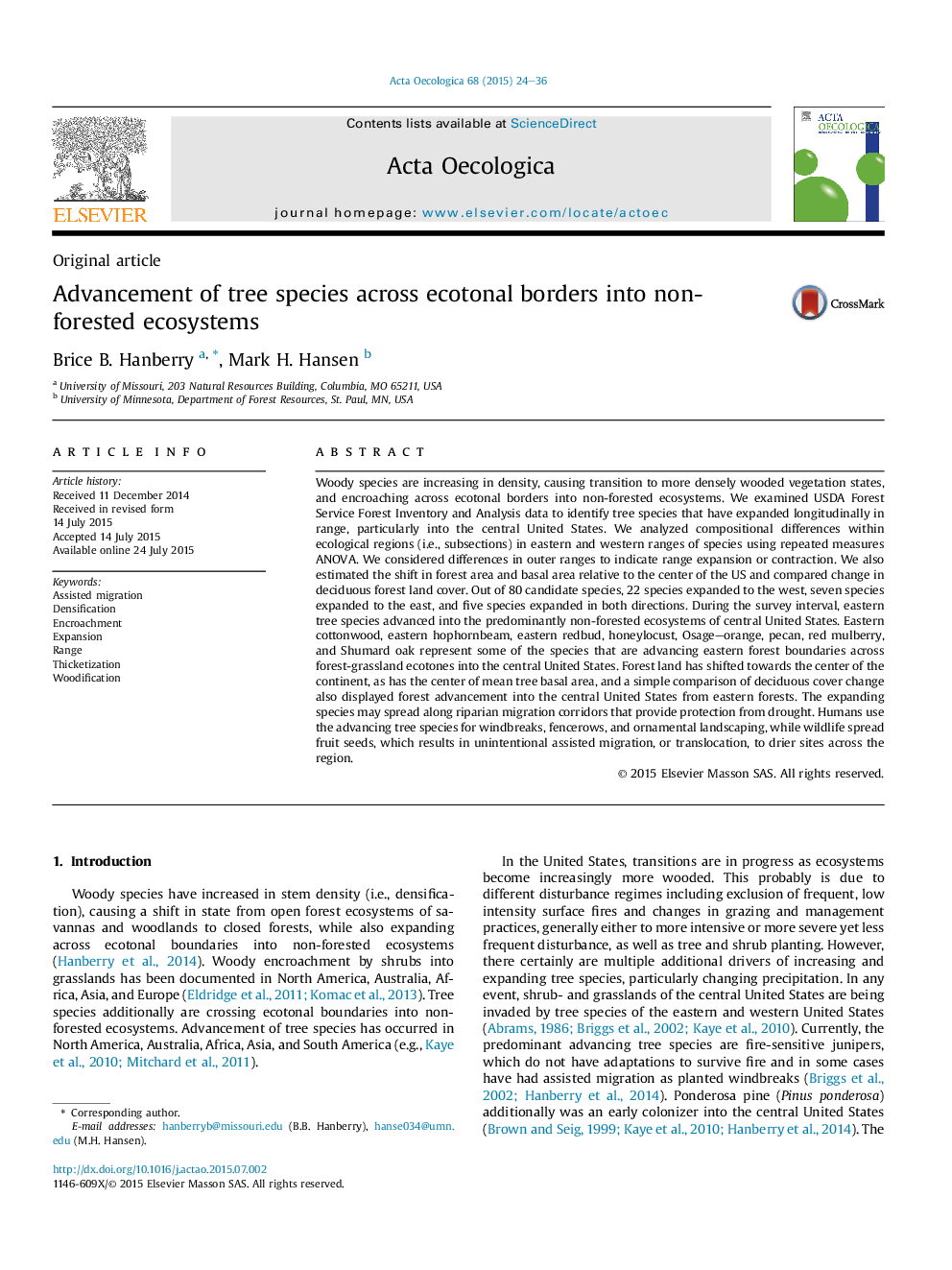| کد مقاله | کد نشریه | سال انتشار | مقاله انگلیسی | نسخه تمام متن |
|---|---|---|---|---|
| 4380901 | 1617704 | 2015 | 13 صفحه PDF | دانلود رایگان |
• Woody species are increasing in density and expanding across ecotones.
• 34 tree species, primarily of eastern forests, expanded longitudinally.
• Eight species expanded into the central US.
• Mean center of forests and basal area have shifted towards the continent center.
• Riparian migration corridors and translocation aid expansion.
Woody species are increasing in density, causing transition to more densely wooded vegetation states, and encroaching across ecotonal borders into non-forested ecosystems. We examined USDA Forest Service Forest Inventory and Analysis data to identify tree species that have expanded longitudinally in range, particularly into the central United States. We analyzed compositional differences within ecological regions (i.e., subsections) in eastern and western ranges of species using repeated measures ANOVA. We considered differences in outer ranges to indicate range expansion or contraction. We also estimated the shift in forest area and basal area relative to the center of the US and compared change in deciduous forest land cover. Out of 80 candidate species, 22 species expanded to the west, seven species expanded to the east, and five species expanded in both directions. During the survey interval, eastern tree species advanced into the predominantly non-forested ecosystems of central United States. Eastern cottonwood, eastern hophornbeam, eastern redbud, honeylocust, Osage–orange, pecan, red mulberry, and Shumard oak represent some of the species that are advancing eastern forest boundaries across forest-grassland ecotones into the central United States. Forest land has shifted towards the center of the continent, as has the center of mean tree basal area, and a simple comparison of deciduous cover change also displayed forest advancement into the central United States from eastern forests. The expanding species may spread along riparian migration corridors that provide protection from drought. Humans use the advancing tree species for windbreaks, fencerows, and ornamental landscaping, while wildlife spread fruit seeds, which results in unintentional assisted migration, or translocation, to drier sites across the region.
Journal: Acta Oecologica - Volume 68, October 2015, Pages 24–36
